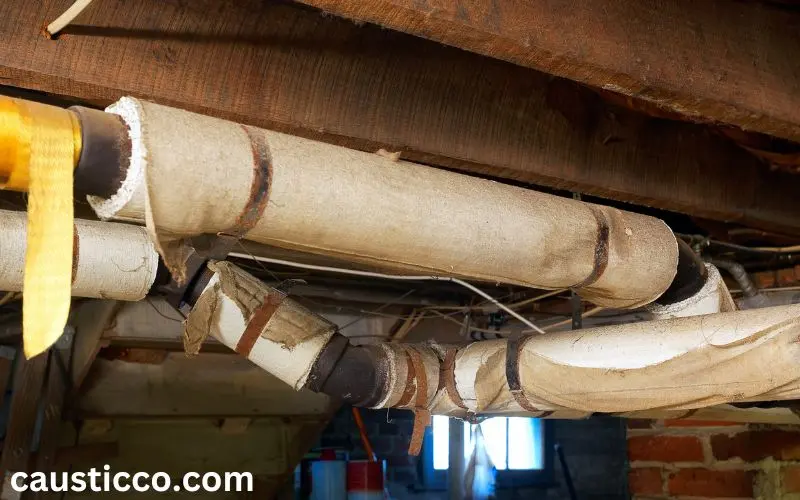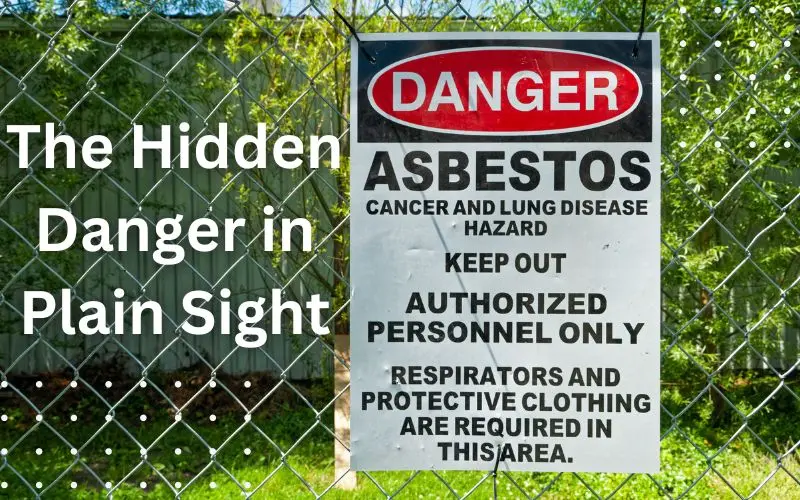Asbestos, also known as non-combustible cotton, is a material extracted from mines. Due to its fibrous nature, it is highly resistant to heat, electricity, and corrosion. Asbestos was extensively used in construction in the past. Still, after certain diseases associated with it were identified, its use has been dramatically restricted. Although there is no ban on the use of asbestos in the United States and some countries, its use is heavily regulated. Russia and China are among the largest producers of asbestos in the world.

What is Asbestos?
Asbestos is a naturally occurring mineral composed of flexible fibres that are resistant to heat, electricity, and corrosion. Due to these properties, asbestos is used in various industries, but unfortunately, exposure to it can be highly toxic.
In the construction industry, asbestos is effectively used as an insulator. It can be added to cement, plastic, paper, fabric, and other materials. However, when asbestos fibres are inhaled or ingested, they can become permanently trapped in the body. Over time, asbestos fibres in the body can cause inflammation, ulceration, and genetic damage.
Exposure to asbestos can lead to cancer and other diseases. A rare and hazardous cancer called Mesothelioma is specifically caused by asbestos exposure. Asbestos also causes a progressive lung disease called Asbestosis. The carcinogenic properties of asbestos have made it a very hazardous substance. I suggest you see the article on Asbestos: What is it, types, uses, hazards, detection methods, and suitable alternatives
Types of Asbestos
Six types of asbestos have been identified and classified into two groups: amphiboles and serpentine.
Amphibole Asbestos
The fibres in amphibole asbestos are straight and needle-like. Five types of this asbestos have been identified:
Crocidolite
Amosite
Anthophyllite
Tremolite
Actinolite
Serpentine Asbestos
The fibres of serpentine asbestos are curly, and only one type, known as Chrysotile, has been identified. Chrysotile is also referred to as white asbestos.
Although asbestos is produced worldwide, the leading exporters are Russia, Kazakhstan, and China. However, this toxic substance was first obtained from a mine in North America.
Asbestos may be found as large deposits or as a contaminant in other minerals such as talc and vermiculite. Chrysotile or white asbestos is usually found as veins in serpentine rock.
Most commercial asbestos deposits contain only 5 to 6 per cent asbestos. Still, there is a mine in California where over 50 per cent of asbestos is found.
Diseases Associated with Asbestos
Scientific research indicates that exposure to asbestos can lead to certain diseases and types of cancer.
Mesothelioma is a type of cancer specifically caused by exposure to asbestos. Additionally, asbestos can cause lung cancer, ovarian cancer, and throat cancer.
Other diseases associated with asbestos include:
Asbestosis
Pleural effusion
Pleuritis
COPD

Hazards of Asbestos Exposure
No amount of asbestos exposure is safe, but generally, the risk is higher when someone is exposed to a high concentration or for a prolonged period.
Any amount of asbestos can accumulate in the body and have harmful effects. So far, no known way to eliminate the effects of asbestos exposure has been found.
Fibers are easily breathable when airborne. Therefore, it is necessary to avoid products that may contain asbestos. On the other hand, individuals living near natural asbestos deposits should avoid soils that may contain asbestos.
Most individuals diagnosed with asbestos-related diseases are men over 60 years old. This is because asbestos-related diseases have a long latent period and often take decades to manifest. Men are more likely to be exposed to asbestos in their work environments.
Occupations Associated with Asbestos
Statistics show that approximately 27 million people were exposed to products containing asbestos in their workplaces between 1940 and 1979. Nowadays, about 1.3 million workers in the construction industry and the public sector are still at risk of asbestos exposure.
While regulations have been developed to significantly reduce the risk of asbestos exposure in the workplace, there are still degrees of risk in some occupations. Some historically high-risk occupations still fall into the category of hazardous jobs.
Dangerous Occupations Associated with Asbestos
Still at High Risk
Automobile Repair
Construction and Equipment Maintenance
Firefighting
Brake Repair
Historically High Risk
Mining
Construction
Shipbuilding
Power Generators
Heavy Industries
Military Services
The US military, especially in shipbuilding, extensively used asbestos between the 1930s and 1970s.
Asbestos Products
In the United States, when an old building is demolished or renovated, people may be exposed to asbestos because it was used in the construction industry in the past. Therefore, it is rare for a worker to come into contact with new asbestos that has legally entered the country.
Uses of Asbestos
In the past, asbestos was used to construct steam engines, pipeline insulation, and locomotives. Later, other uses for asbestos were found, such as making automobile brakes, siding, ceiling insulation, boilers, and so on.
How to Identify Asbestos Products
Microscopic asbestos fibres cannot be seen, smelled, or tasted. Therefore, the only way to identify them is if the packaging indicates their presence. For materials with no indication of asbestos content, a sample must be sent to a laboratory for testing to determine the presence of asbestos.
Asbestos-containing materials can be categorized as follows in terms of their hazardous nature:
Friable Asbestos
Friable asbestos can easily be crumbled or broken by hand. For example, old pipe insulation or talc powder contaminated with asbestos are hazardous because they can easily release toxic dust into the air.
Non-friable Asbestos
Non-friable asbestos materials do not release asbestos fibres unless they are disturbed, such as being crushed or sawed.
Safety Precautions When Working with Asbestos
In some cases, it may be necessary to remove materials containing asbestos. To prevent the spread of asbestos, it is advisable to enclose them with a sealant.
When working with asbestos, the following measures should be taken:
- Enclose the work area with plastic sheets and turn off the ventilation system.
- Use respiratory masks with HEPA filters.
- Wear disposable clothing and gloves when working with asbestos.
- Keep asbestos moist and prevent fibre dispersion using a wetting agent.
- Clean the area with a damp cloth or a HEPA-filtered vacuum cleaner.
- Dispose of asbestos-containing waste in labelled bags and take it to waste disposal sites that accept asbestos.
Is the Use of Asbestos Prohibited?
Although asbestos is not banned in the United States, its use is heavily regulated. The asbestos industry has a powerful lobby that advocates for its interests. In countries like Russia, China, India, and Mexico, toxic mineral materials are still used.
Safe Alternatives to Asbestos
Since the 1980s, manufacturers in the United States have been using safer alternatives to asbestos.
Some of these alternatives include:
- Polyurethane foam
- Cellulose fibers
- Resilient silica fabric
- Thermoset plastic powder
Asbestos Timeline
The late 1800s
Asbestos mining became a significant industry to supply fibers for industrial products.
Late 1927
The first complaints from workers regarding asbestos-related diseases were recorded.
1930s
Asbestos companies conducted health research on the effects of asbestos and kept the results secret.
1933
Eleven asbestos-related lawsuits were settled.
1960s
Studies showed that asbestos is a carcinogen.




